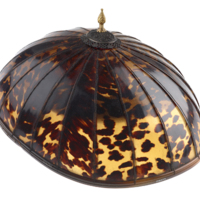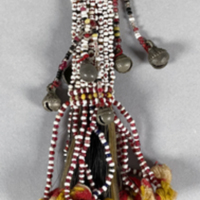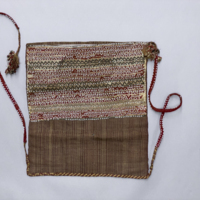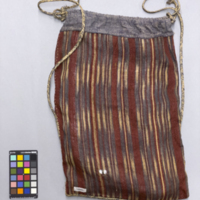Flag, Sultanate of Sulu
Text
Object: Flag | Material: Cotton cloth | Description: Flag used by a Moro sultan or dato. Red, white, and black fields. Five stars and two weapons (symbols) in white.; Field Museum Catalogue Number: 253047
Annotation: Paolo Paddeu, 30 April 2024:
These types of flags were associated with the Sulu Sultanate and began to be adopted around 1899, following the arrival of the U.S. Army during the Philippine-American War. The flag design clearly draws inspiration from that of the USA, featuring a cluster of stars. Therefore, the correct display of the flag, as shown, is with the stars positioned in the upper left-hand corner.
Before 1899, the flags of the Sultanate of Sulu were very different. In addition to having the classic decorative and symbolic motifs of the "Ukkil" ("Okir" in Mindanao) they had symbols such as the Zul Fiqar or the depiction of the Sultan's Palace or according to some of the Gate of Mecca.
The use of stars in flags as a symbol of a territory, province, state or municipality derives from the US flag, in fact the Americans were the first to include stars in a flag as a symbol of a state, in their specific case, 13 stars representing the 13 original states of the USA.
The 5 stars most likely represented the five territories under the Sultanate: Sulu Islands, Basilan, Zamboanga, Palawan and Sabah ( part of it ). A later reinterpretation says that the stars represented the 5 pillars of Islam.
As the flag of the Sultan , some people labelled it as a "war flag" but after the arrival of the US army, the Sultan Jamalul Kiram II never started any war or fought in any battle against the USA, as he was pro-american and in some cases, sent his men to support US troops agains rebels.
These types of flags were adopted from 1899 until circa 1936, and after that date, these types became rare. In recent times, some pro-Sultanates re-adopted the flag, adding the "shahada" and depicting the stars in yellow (gold) which is i a modern version of the post 1899 Sultanate deisgn.
Share this



